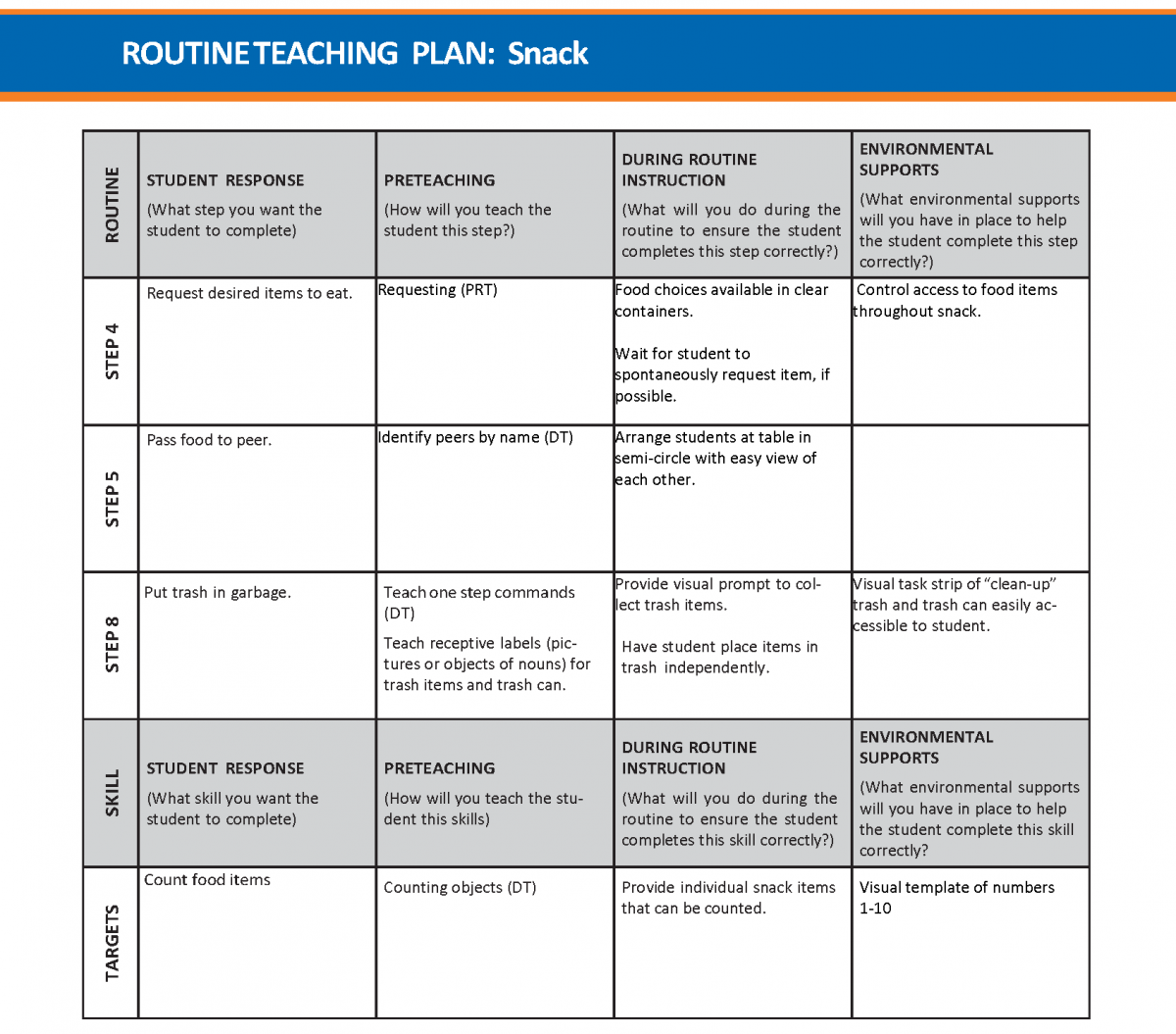Behavior Challenges
Behavior Challenges... An Opportunity to Teach Kids "What to Do"
For many students with autism, a common antecedent or trigger for challenging behaviors is the initiation of a functional routine. Functional routines include those daily activities that make up a student’s instructional day such as arrival and departure from school, transitioning between activities, using the restroom, eating a snack, washing their hands, recess and circle times and other small group activities. Routines can break complex tasks into small teachable steps by telling a student where to go, what to do, and what will happen next. The STAR Classroom Routine Planning Form can help staff identify: specific skills to target and teach before (Pre-teaching) and during a routine, appropriate cues to use, visual/environmental supports, prompting strategies, and positive behavior strategies that can be used to prevent challenging behaviors.See the Instructional Strategies Quick Guide & Additional Tips below for a list of strategies to consider during routines.

Instructional Strategies Quick Guide
- Ensure effective environmental and visual supports are in place.
- Use a reinforcement system at the student’s level when teaching a new skill or difficult step of the routine.
- Provide the student effective prompts throughout the routine.
- Break the routine down into small teachable steps.Do you need to break the routine steps down further?
- Ask yourself: Does the student have the skills or prerequisite knowledge to understand the concepts needed for this routine? Does the student know what to do?
Additional Tips: During Routine Teaching
- Limit language
- Increase nonverbal communication
- Use declarative language
- Tell the student “what to do.”
- When prompting: gain student’s attention
Suggested Prompting Sequence:
- 1 verbal prompt
- Gestural/facial expression
- Visual prompt
- Physical prompt with visual
